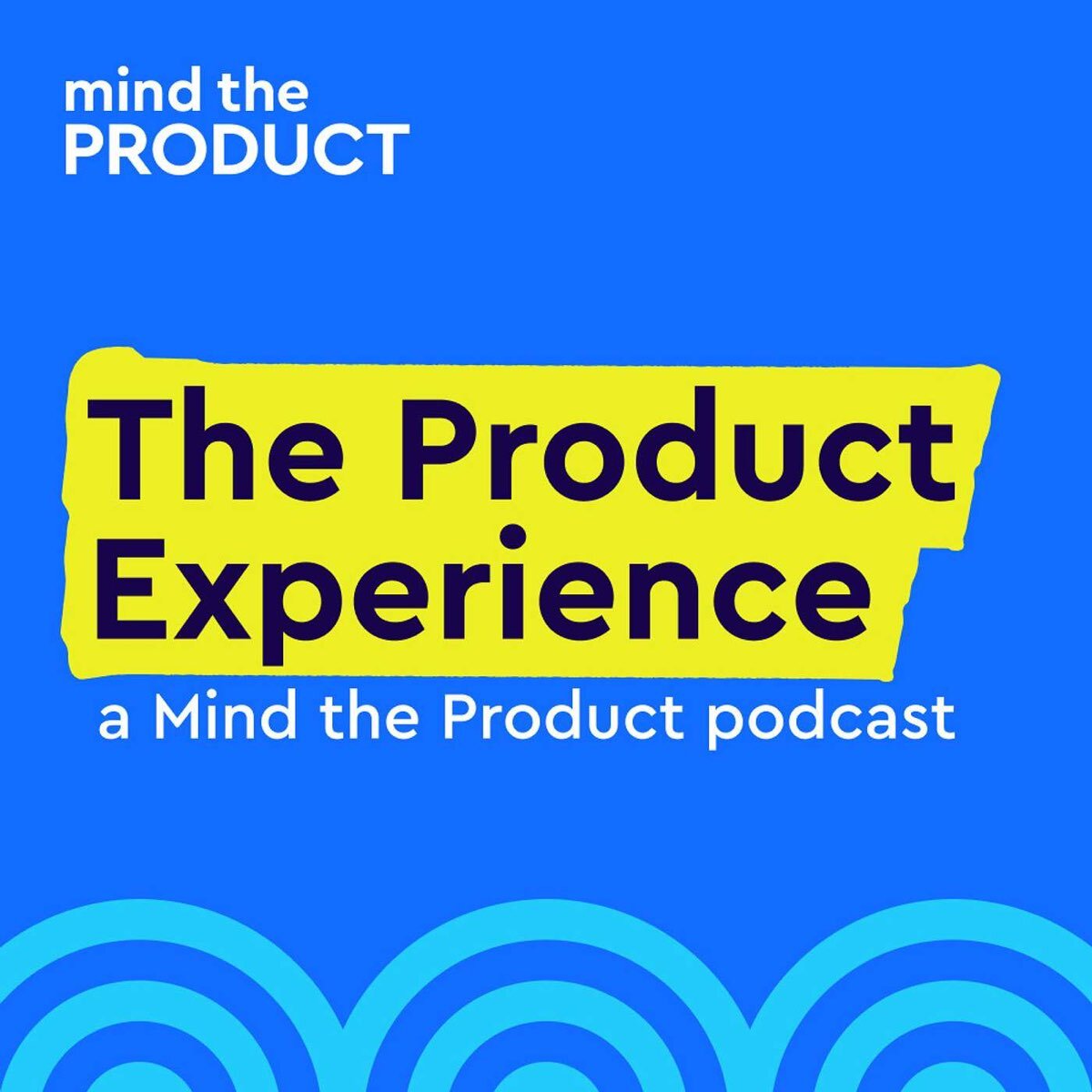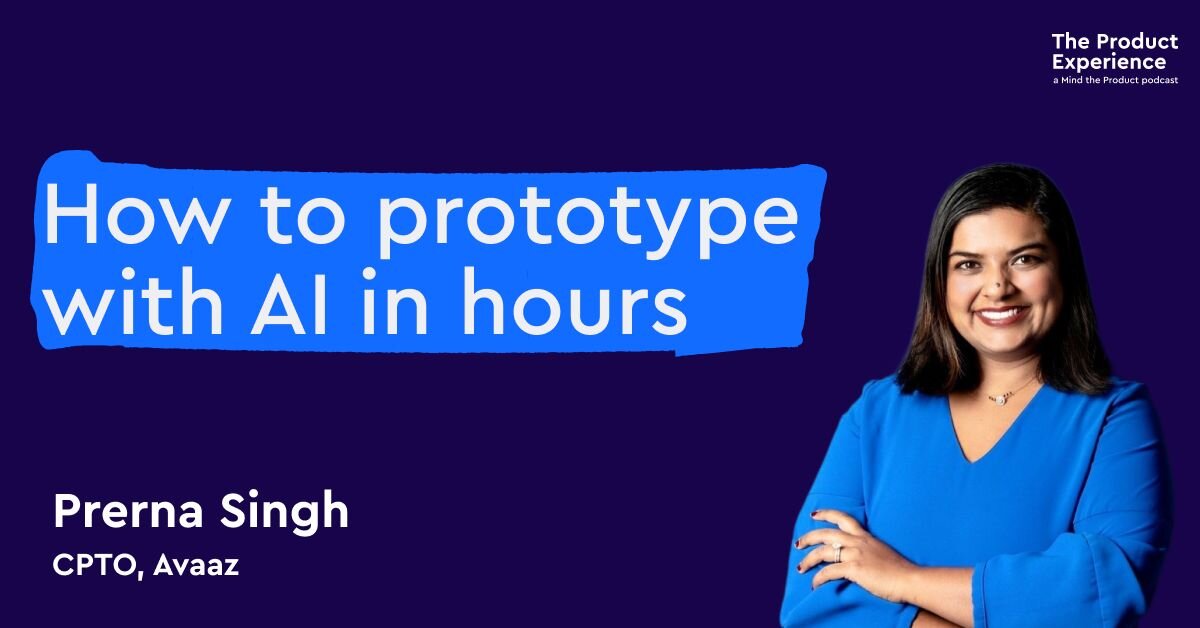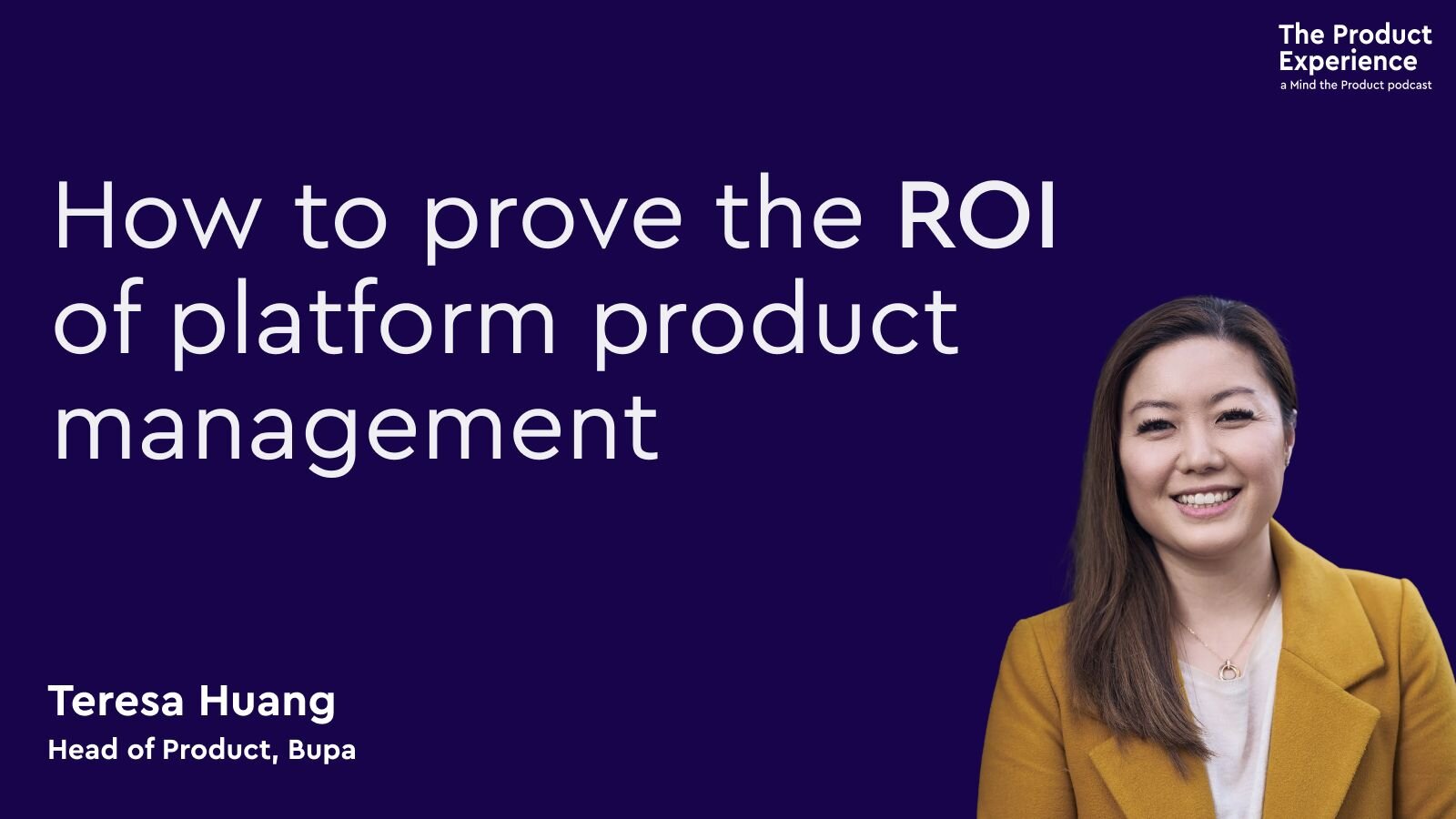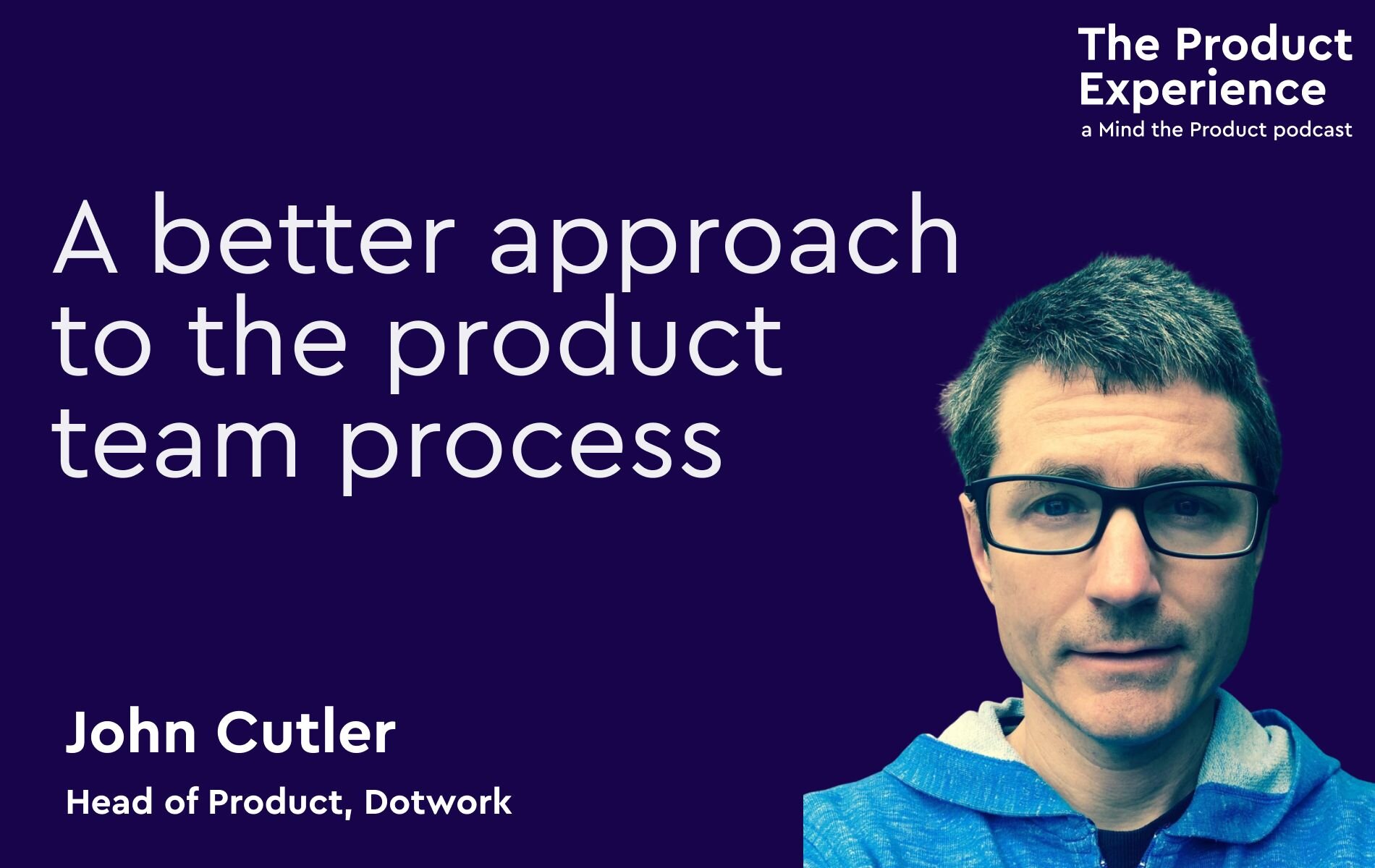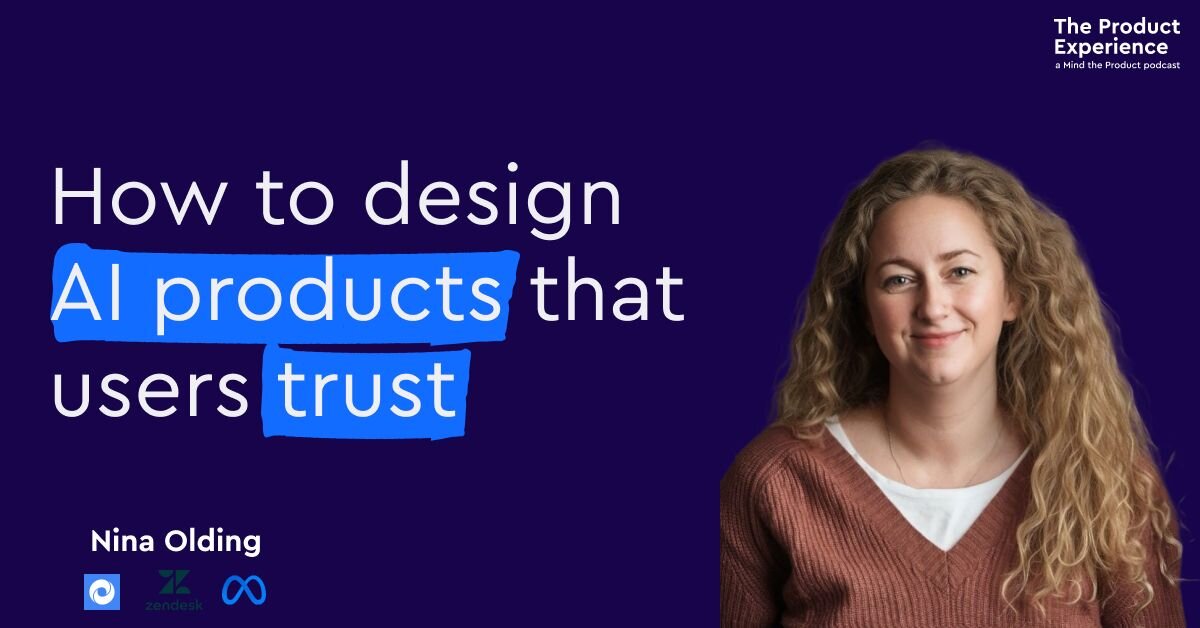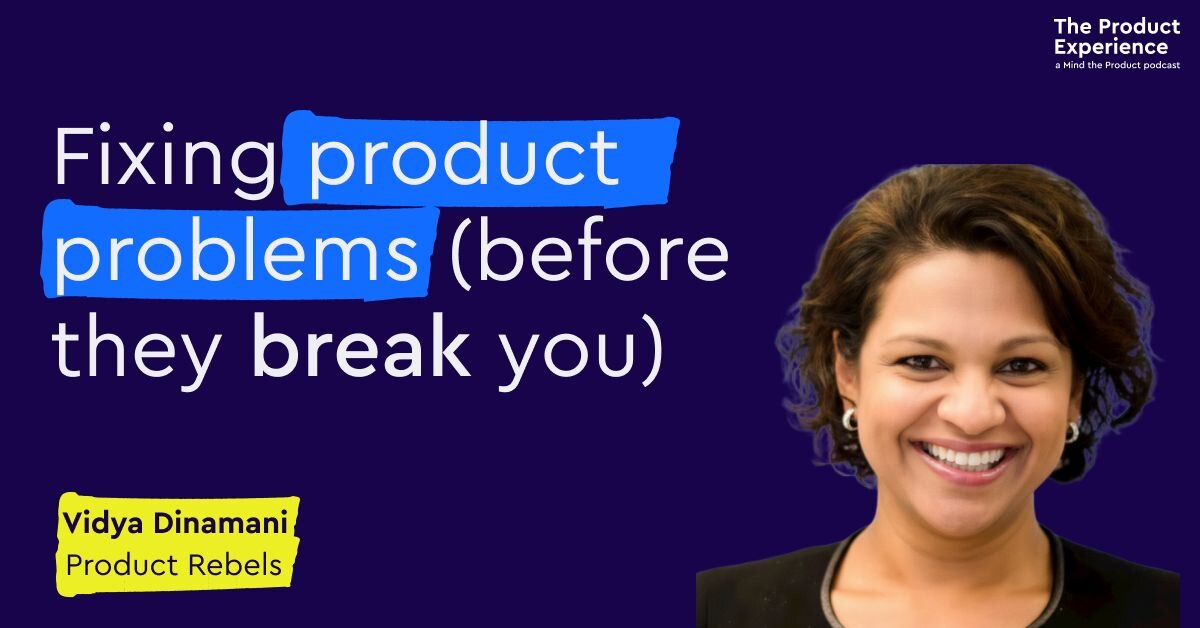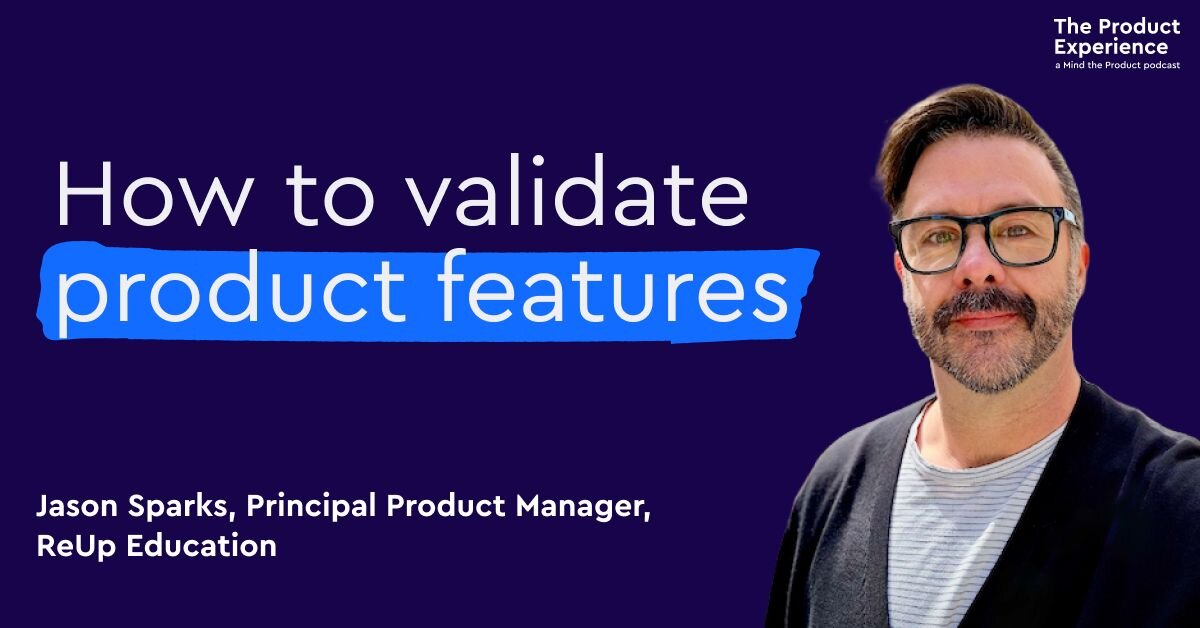In this episode, we cover:
0:00 Implementing Effective OKRs in Large Organizations
11:16 Simplified OKRs and Tracking Progress
16:17 Setting and Reviewing OKRs
25:24 OKRs, Non-Product Functions, and Diversity
Featured links
- Follow Storm on LinkedIn and Twitter
- Work with Storm at the BBC
- Just Eat
- How to write OKRs that don't suck' MTP piece by Adrian Howard
Episode transcript
Lily Smith :
Welcome to the Product Experience podcast. I hope you're all having a fantastic summer. This week we're going to do a rerun and revisit with a previous episode, which was all about OKRs and how to get them right in different sized organizations and at organizations in different stages. We're joined by Storm Fagan, chief Product Officer at the BBC, previously CPO at Just Eat, and there are lots of great hints and tips in here for everyone.
Randy Silver:
The Product Experience is brought to you by Mind the Product. Every week on the podcast we talk to the best product people from around the globe.
Lily Smith :
Visit mindtheproductcom to catch up on past episodes and discover loads of free resources to help you with your product practice. You can also buy more information about Mind the Product's conferences and their great training opportunities happening around the world and online.
Randy Silver:
Create a free account on the website for a fully personalized experience and to get access to the full library of awesome content and the weekly curated newsletter Mind. The Product also offers free product tank meetups in more than 200 cities. There's probably one near you.
Lily Smith :
Hi Storm, welcome to the Product Experience podcast. It's so lovely to be talking to you, hi, nice to be here, hi, so I know you very well because we go way back. But for those of our listeners who haven't heard of you before, haven't come across you, could you give us a real quick intro into who you are and what you do in product and how you got into product in the first place, because it's always great to hear people's origin stories, sure, so I'm Chief Product Officer at the BBC at the moment.
Storm Fagan:
I've been there coming up to six weeks, so it's still really fresh into that job. And before that I was Chief Product Officer at JustEat and I think I've been in product for my whole career. I'm just thinking sometimes with different job titles. I think I was pretty lucky. I came out of university I didn't know what I wanted to do, applied for a job because it sounded really cool. It was a producer at an agency and it sounded awesome and that was pretty much a product job and I just loved it. It was working on digital products with really interesting, varied clients and that kind of got me hooked. And then I've worked in publishing, food delivery. I've done a bit of freelance and consulting and now I'm in media with BBC.
Lily Smith :
Awesome, thank you, and one of the things we love nerding out about when we have occasionally have workie chats is OKRs, so We've always thought of that.
Storm Fagan:
That is making us sound really uncool. We do talk about other things.
Lily Smith :
Yes, we do, that is true, but this is a product audience, so they get it Like we're with our people. Now they understand. So I thought it would be really great because we wanted to get the take on what it's like trying to, or, you know, implementing OKRs in a very large organization. And I know that this is something that you did at JustEat and, yeah, just really wanted to get your experience of this. So, just for the context of those who may not have heard of JustEat like, what kind of size of organization is it and how is it structured? Like, what are the different sort of departments?
Storm Fagan:
So now it is quite big. I think they were Well when I left it was 90 million customers, I think. That's up to 98 million customers, over half a million restaurants and 25 markets, and it's a kind of classic food delivery business. So there's the customer products, that e-commerce products that connect people to their menus. There are the restaurant business products that help restaurants kind of set up their business and then provide the live order processing, and then there are the products that the couriers use to kind of schedule orders and then find out where to go to drop them off to the customers. So it's a really nice product set actually, because you're doing B2C, b2b and then a kind of logistics piece as well. So that's quite cool. But when I started six years ago it was just post-IPO, I think there were 100 people in products and tech, so it was kind of a bit smaller scale. And then when I left, I think there were just over 2000 people in products and tech. So that change kind of happened over about six years.
Lily Smith :
So yeah, quite a significant amount of growth in that period. And at what points did OKRs become a strategy for managing or like working within the business?
Storm Fagan:
Well, I think, like many people, we tried OKRs spectacularly failed, backed away from OKRs and then tried them again and it worked. So when I first started there, okrs were in place and everyone was using them and it was something that every team signed up to. So every team signed up to OKRs. There was a tool for kind of tracking OKRs that they built in-house and it was the thing that everybody was using. But it kind of backfired a little bit because something that was meant to allow for flexibility and outcome-based decision making actually turned into this like really rigid and inflexible system because everyone would commit to OKRs at the beginning of the quarter, put them into the system and then couldn't really budge off of their roadmap for that quarter because they had committed to these OKRs and everyone was slightly more focused on whether or not they'd be able to say that they did their OKRs at the end of the quarter than whether or not we'd actually achieved the outcome. So everyone in product ended up hating it, because there's a lot of process around it and a lot of kind of updating of systems and people outside of product hated it because it kind of made the product team really inflexible and quite rigid. So we weren't actually able then to react to what was quite a fast moving market because we were almost running sort of quarter to quarter. So, yeah, we Sorry, randy.
Randy Silver:
I was just going to ask is that a failure of focusing on the KRs rather than the O's? It sounded like people had committed to doing certain things, regardless of whether that was the best way to achieve the objective.
Storm Fagan:
Yeah, I mean. So that was six years ago and I have learned, as many of my colleagues there, the hard way about how to make OKRs effective at scale, and that is the wrong way. And I think that the mistake that it's easy to make is to think of OKRs as a sort of methodology that you can use for planning, and it's really. It's a, it's not a methodology. So if you try and use it for planning, it's sort of a spectacular failure really and you end up Obsessing about the process of it because there isn't a process, so you kind of have to make one up Instead of focusing on the outcomes. So I think that's what the problem was, and I've talked to other people in other companies. You've had a similar experience and it's the same thing, where you kind of end up focusing more on the process than the outcomes and where it, when we backed away from it and it's sort of got this really bad rep in the company, you know everyone sort of had a bit of a shiver every time you mentioned Okay, it was, it was pretty bad, and and then we tried them again because the thing that we needed was simple Storytelling and simple alignment. We were growing so fast and we kind of went from products and tech team where you knew everybody in the products and tech team and they were your friend to you know some years we were growing sort of a hundred percent year on year in terms of the number of people joining the department. So it quite quickly got to the point where not only did you not know the name of that person but there were people starting that you didn't even know that they have started and bits of the product or that you didn't even know about, right. So that alignment piece sort of scaled past what was possible from a sort of human relationship point of view and we needed something that would really easily Get everybody to see what was important and what we were focusing on. And actually we took a really Simple approach to okay ours and this worked really well where we didn't do any process changes Alongside the okay ours. We didn't try and cascade them through the business and we really kept it really super simple and we just went for three Objectives that we wanted to do that were that kind of identified what out of the strategy we needed to focus on right now and Spent more time focusing on the key result side of things so how we would measure Whether or not we'd achieve those objectives. Can we actually measure those key results? And also that measurement, can you see it move Frequently enough? You, it needs to be something for people to really get. It needs to be something that you can see move on a sort of weekly or fortnightly Basis. So the kind of that we put more into that bit less like no effort really, if I'm honest into the sort of process side of things. And that then worked really well because it was really simple for everybody to kind of understand. These are the three things that matter, really easy and fast for us to all be able to see whether or not those things were progressing, and no kind of large-scale change management, horrendous process changes, and that's that's been. That was much better.
Randy Silver:
I'm curious. You just said it's. One of the key things there was that it was things that you would measure every couple weeks and you'd need to see movement on them. Yeah, so are okay, are as effective. Or were they effective for you on larger-scale infrastructure type things, or was it only on Projects where you could see incremental improvement?
Storm Fagan:
So we split it out into these. I really like okay ask for strategy, so Things where you're not necessarily sure exactly how you're going to solve a problem but you know what the outcome looks like if it's good, if it's working and it works really well for strategy changes, for stuff that is more known and more around, kind of existing Position in the market, like how your live products are at the moment, and kind of optimizing live products. I don't really use a chaos for that because I just think it's it's sort of unnecessary. It's much easier there to have a set of KPIs that you know have to be healthy and kind of looking at them and going, you know, sort of heat mapping them and going, well, this one's not healthy, we need to do something about this one. You don't really need to make an okay, I'll about that. It's like you know it's as basic as get availability back up, so your availability score or whatever it needs to be, so that sort of them leaves you down to this way of splitting your time between Strategy and maintaining your position in the market, depending on the size of business and also your tech debt, how competitive the market is, how many products you've got out there, all of that kind of stuff. You kind of need to make a sort of judgment call on how much time you want on that Market position versus how much time you want on strategy, and you can always change that over time. But you sort of differentiate them as Sort of percentages of time, quite clearly, and just use the okay ours on the strategic stuff and then you're not trying to fill up sort of a hundred percent of everybody's time with OKRs. So you do end up in a position where and this was a little bit uncomfortable but actually worked really well where for me first started, everyone would say I need to see what I'm doing reflected in the OKRs, like I can't buy into OKRs if I can't see my work. And then you end up with OKRs that don't really make much sense and they're really complicated, or then you know they don't hang together as a story, but everyone can see their work and everyone kind of feels important, and that was part of the way which didn't really work, whereas when we did it again the second time, we just had the three simple OKRs and if some teams couldn't contribute to the OKRs, then that was a really good thing to know actually, that it's fine that you're not trying to move the strategy forward. Are you trying to maintain that position in the market? Yes, okay, great. If it's no to both of those things, then you've kind of got to ask the question of like, well, what are you doing right and why are you doing that? So it sort of leads to the right sort of behaviours and conversations.
Lily Smith :
You make it sound very, very simple, but it is good, no we did it the second time.
Storm Fagan:
So simple and so effective the first time. Oh my goodness, so complicated and full OKR hell.
Lily Smith :
So you've mentioned, obviously, that you had just the three simple OKRs objectives, sorry, and then presumably a number of key results for each one. But did you not then think, okay, maybe we can cascade this, or did you have any kind of cascading happening? Or was it literally like each team that were the kind of dedicated to the strategy side of the business, then taking each of those objectives and deciding which key results they were going to focus on in order to move the objective?
Storm Fagan:
So I didn't try and cascade them. Teams could decide. So some teams had carried on using OKRs at a local level and they were really comfortable with it and that was fine. So they could easily cascade the OKRs. Other teams were using different methods or processes and it was fine. They just carried on using whatever they used. So there's no kind of process change associated with the OKRs but we did have. The thing that then becomes interesting is if you think of objective as like the primary level and key results as the secondary level. There's then like a tertiary level of like how do you know that key result is moving? Because if it's strategic and you're in a big company, it might, you might not get there for six months, nine months, 12 months, and so you can't have a key result that is static and not moving for a really long period of time, because then everyone sort of loses interest. So actually that's sort of third level of what are all indicators that are telling you that you're moving that key result and are they moving? That then becomes really important and that's a mix of burn-ups towards kind of product changes that you think are going to add to the proposition. Might be sales targets, it might be a headcount or hiring or onboarding. It could be kind of user sign up and marketing targets can be a mix of anything, and that's what I mean about you've got to really know what those things are, track them and be able to see at least one or two things in that dashboard move on a quite granular basis, because then you know if two weeks go by and nothing's moved, you're like okay, something weird is going here. If another two weeks go by and nothing's moved, nothing's happening, like nobody's actually doing the work, so you want to be able to see it sort of weekly to fortnightly and kind of be really clear about who's accountable for user sign up, who's accountable for onboarding all of those employees, who's accountable for the delivery of the burn-up to you know these and product changes that you've agreed upon.
Lily Smith :
Hey listener, do you fancy levelling up your product management skills and are you ready to take that next step in your product career?
Randy Silver:
If you do, you're in luck. Mind the Product runs regular interactive remote product management training workshops where you can dedicate two half days to honing your skills with a small group of product peers.
Lily Smith :
You'll be coached through product challenges by an expert trainer and you'll walk away with frameworks and tools you can use right away.
Randy Silver:
I really like the idea of two individual half days. There's lots of time in between to decompress and process all of the day's light bulb moments.
Lily Smith :
Clever and you can choose from product management foundations, communication and alignment, metrics for product managers and mapping to solve product problems.
Randy Silver:
You can find out more and book your place at mindtheproductcom slash workshops.
Lily Smith :
And what about when it comes to actually setting the objectives and then the various different? It sounds like your teams were very autonomous, which is awesome, but how do you check in on what they're setting and how frequently? And if there's no structured process across the business, how do you ensure that that's being done to a certain standard?
Storm Fagan:
Yeah, so there was. I mean, it's not that there was no structure, there was, but teams could kind of choose do they want to use Scram or Kanban or anything else, and how do they want to talk about their roadmap and all of that kind of stuff. And I think you know, we sort of learned because we were scaling the team size so fast. We learned some really hard lessons about how to grow people that quickly. And earlier on we kind of made a few mistakes around over standardising on formats and templates and documents and being quite rigid about that. Because at a management level you can, then it's really good for you because you can see what's happening, but at a team level you're really sort of disempowering the teams. So we that's, we sort of stopped doing that. So we had data that reported up and there were some key data points that every team had to be able to show, you know. So you know their throughput and their velocity and all of that kind of stuff. So we can. There was structure there that told us that the teams were kind of moving and progressing. But really, you know, we kept it sort of super lightweight on the OKR side of things. So when we were then. So then the really interesting thing became when you're setting the OKRs. You know how are you kind of setting them? Because what we learned was and I say this with the greatest respect to all product managers is that whatever you set as a key result, they will try and gain that metric. So you know what I mean. So you've got to really think about you, kind of got to think it through as a product manager and go, if someone were to give me that key result, what would I do? And I've what I really love now, as my secret product nerd, is looking at other people's products and trying to go oh, I can see what they might have set as the OKR. Like Google Maps at the moment, I think, has got an OKR around clicks on the page because there's a lot of extra things that you can suddenly click on, that kind of duplicate UX and duplicate interactions, right. And so that's what I mean is if you, when you set a key result, you've got to expect you're really you hire clever, creative people, right, so they're going to be clever and creative about the key results that you've set them, so what is then the sort of a bit of a conversation? Actually, that's the art, I think, of the OKR is in the setting of it, where you go. You know, if I was to set you this OKR, what would you do? And then they you know people come back and say, well, I would do this and you have to go. Hmm, is that? Is that what we want you?
Lily Smith :
know what I mean. Is that the behavior that?
Storm Fagan:
we want. Is that taking us in the right direction, or do we need to word it differently or measure it differently? And if you can get that bit right, then you know everything will kind of flow through. But it's the second of them is actually quite the hardest bit, I think.
Randy Silver:
Yeah, so how would you actually set them and how long would it take you? Would it be a conversation among the senior management team? Would it be in conversation with the other product leaders? What does it actually look like in terms of drawing up the OKR for the organization?
Storm Fagan:
So so it starts with strategy of do we know where we want to go over the long term and what are our kind of strategic levers that we're trying to pull. And then you know, you get down into OK, so what's the next set of outcomes that we need to achieve? You know we need to have grown I don't know this metric by this much, or we need to have changed user behavior in this way for this reason. And then that kind of tells you the area that you need to set the OKR in. So it starts kind of at that top level, linking up to company strategy as closely as possible. And then you kind of draw up a set of OKRs as a draft and at that point we then start talking to product leadership about, ok, what would happen. You know, what does this look like, how does everyone feel about this? And that's where you then get into a little bit of back and forth and you have to just then be do you have to mean that that bit takes, frankly, that takes a little bit of time. So we were working on a sort of quarterly-ish basis and that would probably take about a month would be the drafting to the agreement of the OKRs because you know you'd have to kind of go around it a couple of times before you felt comfortable that actually it was going to do what you needed to do for the top level strategy and actually the teams understood what good looked like and how the type of things that they were going to do to move the key results.
Lily Smith :
So you've got your kind of strategy for the year or three years or five years or whatever, and then translating that into quarterly OKRs, which then you work with the rest of the product teams for them to come up with their KRs or whatever their kind of individual team processes to support the business OKRs yeah Cool. So what do you do at the end of the quarter? How do you kind of finish the quarter? When do you begin to review, or you know is like when do you reflect on them and how does that process work? So the.
Storm Fagan:
so once you've got that kind of third layer of tracking dashboards in place, then you're not actually having to do a massive reflection piece at the end of the quarter because you can, you can see week to week like which one's moving and which one's not. So when one finishes you can just pull one in and actually sometimes if one is going to take longer it just rolls forward and you don't need to do any big planning because you kind of know what's happening there. So that was so. That's kind of key, I think, is that upfront kind of sort of progress tracking and dashboard piece. And then the bit that's important then is having that backlog at a sort of macro level of possible future OKRs, so that kind of big discovery of next strategic pieces. You know what you can pull in next and then you're not massively doing a kind of big sort of retrospective on the OKRs. You might be from a throughput and a delivery point of view, for example, or from an availability and a kind of platform point of view, but the OKRs themselves are just a kind of rolling process.
Randy Silver:
So if you don't hit one, does it automatically roll through or is it a considered thing of? Is this still a priority for us? Should we rebalance?
Storm Fagan:
Yeah, let's try a question. So that is. That comes down to the sort of regular conversations that you're having with the product people that are working on that OKR. So you know, there's plenty of times where we've set something and we've either realized that the metric that we're using is too noisy and big and it's going to take and it's actually we thought it was a leading metric and actually it's a lagging metric and we can't see it move fast enough. And then we've had to break that OKR down into something else that is more kind of indicative and fast moving. Or we've looked at something and gone. Actually that isn't great. You know that doesn't have this kind of product market fit that we thought it did. Or you know we've kind of reached diminishing returns and that's, you know, that's the skill of the product managers, right of them knowing their space and being able to kind of use the data that they've got and their kind of personal subject matter expertise to be able to say to you this is worth pursuing, right to know, this one, this one isn't. And as long as you've got a really clear plan, then when you're off plan you can have really sort of positive conversations, challenging ones, but you can have really sort of positive conversations about where where actually that thing is and actually, the faster you can decide to change direction and measure in a different way or stop something, the better, frankly, rather than trying to keep following something through.
Randy Silver:
So sometimes with an OKR, you set the objective because you've got this, this prize in mind and you have a hypothesis of how much effort it'll take to get there. Have you ever come across time when, when the effort was actually much bigger when you might? The risk-reward ratio might not be the same.
Storm Fagan:
So early on, when we first started with OKRs, we definitely found that and you know, I think there is a real interrelationship between OKRs themselves and the delivery methodology that you're using and whether you're efficient in your throughput and your cycle time and everything is is good and therefore you you kind of understand how efficient you're being. But actually, as we got more mature with it, the all of that was worked out in the discovery of the future OKRs, so we didn't end up pulling stuff in where we weren't really sure whether or not we could achieve it in a kind of meaningful timeframe or meaningful budget spend, as it were. Cool.
Lily Smith :
So what about the rest of the business, and when? I say the rest of the business, I mean the sort of non-product functions. You kind of mentioned health KPIs, and when I think of health KPIs I think of like performance and uptime and that kind of stuff. But what about the sort of back office functions like finance and HR? Do they partake in any of the OKRs format or do they kind of remain separate from it?
Storm Fagan:
Yeah, I mean not in a formalized way where everybody kind of like it wasn't a big change management plan, but we did use OKRs for our strategy and when finance or HR were part of that strategy then they had shared OKRs with us. So to give a sort of example might be, if we had a really big client, big new restaurant brand that we were trying to onboard, then often what that would mean is like onboarding new people to work on that brand. So there's a whole hiring and kind of HR piece. There's a budget spend around marketing versus the sort of commission that we're getting. So there's a finance piece and finance kind of tracking, like the cost per order, for example, or the revenue per order. So they would take part in that. But it wasn't that HR suddenly decided they were going to roll out OKRs.
Lily Smith :
Yeah, that makes sense.
Randy Silver:
Okay, and speaking of HR in a totally different context, we've all seen examples, or heard examples anyway, of OKRs being used in performance management. Was that ever used at JustEat, or is that something that you shied away from?
Storm Fagan:
We did. In the end. We did use them for performance, but not necessarily. Again I'll make it sound really flaky, but it wasn't. It was just something you could choose to use. It was just a tool, right, so you could choose to use it or not. So I used it with my team because we were so familiar with OKRs and the type of conversation that OKRs generated that it was a really comfortable framework for us to use. So we did use OKRs in our leadership team because it meant that they all laddered up to, kind of the main thing that we were working on. We could be really transparent with each other about what our OKRs were, but again, it wasn't something that we tried to enforce at scale.
Lily Smith :
And how about kind of practically managing the communication of OKRs across the whole business? How did you do that? Because when you're in a very large organization, I imagine that process of setting them and then communicating them to everyone so that everyone understands this is what we're doing and this is why we're doing it it potentially can be tricky.
Storm Fagan:
Yeah, and I think OKRs as well can sometimes turn into product speak and some stakeholders are just not comfortable. They're not comfortable with words like discovery and they don't speak product. And we think we're speaking really plainly and then you go and speak to a stakeholder and they literally don't understand what you're talking about. So sometimes we would not frame what we were doing as OKRs. We would talk about it in more plain language rather than in the OKR format and then we thought about what we needed to broadcast and, being really clear, there's only three things that we're doing now. These are what the three things are Use as many pictures and data points as possible to keep it really simple, and try and do that on a fairly regular basis. So it was monthly and everybody knew what to expect in terms of communications. And then within the teams and within our org and with the stakeholders that we were working with that were accountable for some of those shared key results. It was that kind of dashboard of every week, every fortnight, what's moving, what's not moving, and it became much more into detail then.
Lily Smith :
It's really nice to hear such practical examples of how you did it and I'm sure there'll be loads of people taking away a lot of tips from this conversation. But before we wrap up, one of the other things I really wanted to talk really quickly about was diversity in your product teams, because I know you're a huge advocate for diversity and I just wanted to ask you quickly, before we close, what were the sort of strategies used in the business and just eat to try and improve the diversity of the people within the sort of product function.
Storm Fagan:
It came down to two things in the end. It came down to the community and building a community that was inclusive and that is behaviors and allyship and being able to have the hard conversations and that kind of as a leader, you're the person that has to do that stuff first and you have to kind of be prepared to talk about difficult topics and be really sort of vulnerable about them and then everyone feels a bit more comfortable that they can kind of engage in talking about them. And then the second thing is structural change. So you can't really build a diverse or increased diversity if you're not structurally changing the sort of system that's in place, because no matter how hard we try, every kind of society has structural bias in there. So really really proactively looking for that structural bias and weeding it out on a sort of continuous improvement basis was the key thing. When you kind of combine both of those things together, what you get is a community that feels supported and also can anybody feels that they can speak up about structural bias when they see it, because we're all different. We all have different perspectives on the community in which we live. So one person might not see a sort of system as being biased, whereas another colleague might. What you want is everyone that sees that stuff to be able to speak up about it, so that community becomes really important. And then the structural side of things is like literally stripping it out over and over again until the system becomes kind of fairer. And that's everything from hiring practices to everything, from having diverse panels, diverse candidate lists, looking for candidates from different pools. And you might have more traditionally looked for taking time to build those diverse candidate lists, because sometimes, if you're not used to doing that, it can take a little bit longer to build the shortlist. And if you're hiring really fast, particularly if you're in a startup or a scaling organization, the sort of sense of urgency to get people in can be a bit overwhelming. And that can then reinforce you hiring from the same pools over and over again, all the way through to policies around parental leave and literally everything, and just to keep looking at it. And we did use OKRs for that, because that is the strategy and you have to cut again. You want people to gain and lose key results. So if you set the key results right, then people find the things that will get there the fastest.
Randy Silver:
I love that I'm stealing a lot from this conversation. Thank you, this was a really fantastic conversation. At OKRs Sometimes feel really overwhelming about how to do it right. We have a recurring question about what's the secret for making them work, and I feel like you actually told us the secret.
Storm Fagan:
Thanks. I think, honestly, I used to hate them. I genuinely hated them, and maybe not quite as far as I was afraid of them, but I just felt that they were a buzzword that meant nothing. And then when we did them properly and we kept it really simple, it was properly game changing. So I highly recommend it Fantastic.
Randy Silver:
Thank you very much.
Lily Smith :
The product experience is the first. And the best Podcast from Mind the Product. Our hosts are me, Lily Smith.
Randy Silver:
And me, Randy Silver.
Lily Smith :
Lu Run Pratt is our producer and Luke Smith is our editor.
Randy Silver:
Our theme music is from Hamburg-based band POW. That's PAU Thanks to Arnie Kittler, who curates both product tank and MTP Engage in Hamburg and who also plays bass in the band, for letting us use their music. You can connect with your local product community via product tank Regular free meetups in over 200 cities worldwide.
Lily Smith :
If there's not one near you, maybe you should think about starting one. To find out more, go to mindtheproductcom. Forward. Slash product tank 右手. Click on OK. Grcier Addiction.
